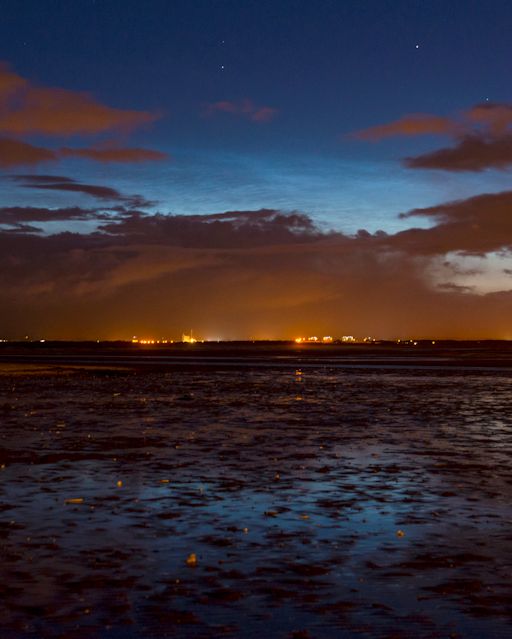At www.spaceweather.com … the start of the noctilucent cloud season – see below for the view above Scotland
 Earth orbiting satellites have been photographing the electric blue clouds for days. Last night, the 26th May, sky watchers on Earth could see them. This picture was taken from Ayrshire. It shows the noctilucent clouds above dark storm clouds passing over Scotland.
Earth orbiting satellites have been photographing the electric blue clouds for days. Last night, the 26th May, sky watchers on Earth could see them. This picture was taken from Ayrshire. It shows the noctilucent clouds above dark storm clouds passing over Scotland.
Noctilucent clouds are seeded by meteorites. They float at the edge of space, some 80km above the surface of the Earth. They are very cold and filled with ice crystals and when sunlight hits the ice crystals they glow electric blue.
Noctilucent clouds first came to the notice of scientists after the eruption of Krakatoa in the 19th century. Space Weather claims noctilucent clouds have become more common (probably more to do with better telescopes and instruments in general) even being visible as far south as Utah and Colorado. Naturally, some people suggest this has nothing to do with technology but is evidence of greenhouse gases becoming more dominant in the atmosphere (and pigs might fly).
The interesting point about this year's report on noctilucent clouds at Space Weather is that we are told that ever since the 1970s radars probing Earth's upper atmosphere have detected strong echoes from altitudes between 80km and 90km – but what is causing them? The MST Radar Facility in Aberystwyth detected radar echoes on May 26th. They appear to occur over the Arctic during the summer months, May to August, and over the Antarctic, November to February – the very same months that nocitlucent clouds appear. The origin of the radar echoes is controversial, it says, which implies differences of opinion and no firm source. Are the ice particles in the clouds electrically charged? This is one idea. Meanwhile, at the Polarlightcentre at Lofoten in Norway, intense radio reflections have been detected for the past two nights – using a forward scatter meteor radar. Is it detecting the meteors responsible for the noctilucent clouds?
